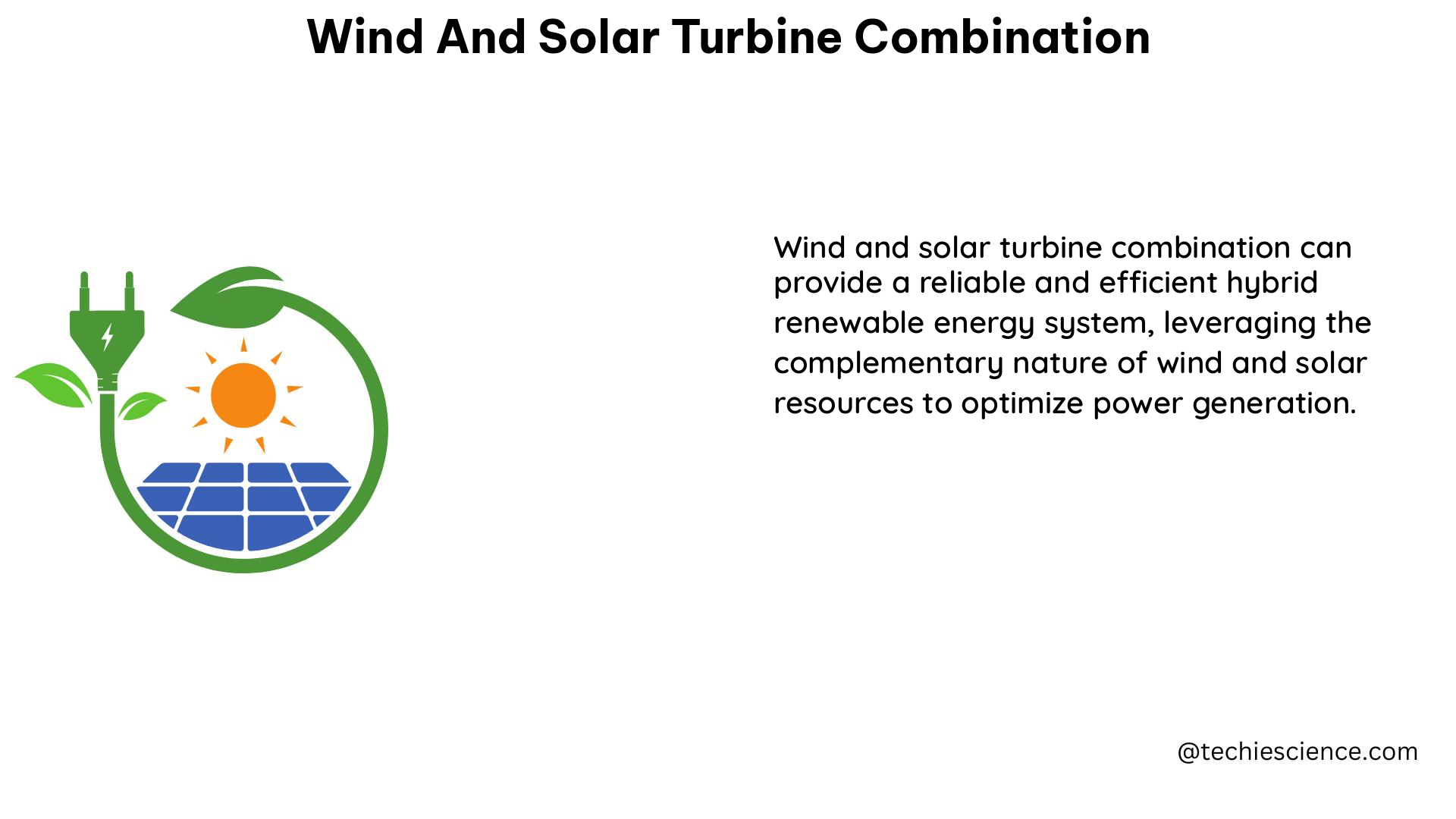The combination of wind and solar energy sources has been found to improve the stability of the energy resource throughout the year. By pairing wind and solar assets, the energy supply can better meet constant load demand and reduce storage requirements compared to using only solar power. This comprehensive guide delves into the technical details and key considerations for optimizing a hybrid wind and solar turbine system.
Understanding the Hybrid System Design
The hybrid plant sizing was completed for critical load factor values of 1.0 and 0.9, representing minimum load targets of 100% and 90% of the design load, respectively. The technology cost assumptions used for sizing are based on NREL’s Annual Technology Baseline 2025 data for the “moderate” 2025 technology innovation category:
- Wind turbine cost: $1,492 per kilowatt (kW)
- Solar PV cost: $1,095 per kW
- Battery energy storage rate: $179 per kW
- Battery energy storage capacity: $206 per kilowatt-hour (kWh)
Wind Turbine Specifications
The wind turbine used in the analysis is a GE 2.5xl, 2.5-megawatt (MW) unit, with parameters determined through the NREL System Advisor Model (National Renewable Energy Laboratory 2020) default model generator. The key performance characteristics of the wind turbine are:
- Maximum rated power: 2.5 MW
- Cut-in speed: 4 m/s
- Cut-out speed: 25 m/s
- Hub height: 80 m
- Rotor diameter: 100 m
Solar PV System Specifications
The solar plant used in the analysis is a nonbifacial monocrystalline silicon panel with the following specifications:
| Parameter | Value |
|---|---|
| Solar albedo | 0.2 |
| AC wiring loss | 1% |
| DC wiring loss | 2% |
| Diode connection loss | 0.5% |
| Mismatch loss | 2% |
| Nameplate loss | 0% |
| Soiling loss | 5% |
| DC degradation | 0.5% |
| Azimuth | 180 degrees |
| Ground coverage ratio | 0.3 |
| Tilt | 20 degrees |
| Module aspect ratio | 1.7 |
The module current/voltage curve is provided in Figure 4 of the reference material.
Evaluating Costs and Values

The combination of generation costs with either generation values or integration costs provides an improved understanding of the economics and policies surrounding wind and solar energy. The costs and values of these renewable sources are the principal determinants to their growth, in the absence of significant subsidies, standards, or carbon-based policies that support renewables.
Cost Considerations
The technology cost assumptions used in the hybrid system design are crucial for understanding the overall investment required. These costs include:
- Wind turbine cost: $1,492 per kW
- Solar PV cost: $1,095 per kW
- Battery energy storage rate: $179 per kW
- Battery energy storage capacity: $206 per kWh
These cost figures are based on NREL’s 2025 technology innovation projections, which represent a “moderate” level of cost reductions.
Value Considerations
The value of wind and solar energy is determined by various factors, including:
- Generation Values: The market value of the electricity generated by the wind and solar turbines, which can be influenced by factors such as time-of-day pricing, capacity value, and ancillary services.
- Integration Costs: The costs associated with integrating the variable renewable energy sources into the grid, such as transmission upgrades, grid balancing, and backup generation requirements.
Understanding the costs and values of wind and solar energy is essential for evaluating the cost-effectiveness of renewable energy policies, such as renewables portfolio standard (RPS) mandates, and for informing energy research and development priorities.
Conclusion
The combination of wind and solar energy sources has been found to improve the stability of the energy resource throughout the year, with a hybrid plant sizing based on technology cost assumptions and key performance characteristics of wind and solar turbines. By understanding the technical details and economic considerations of this hybrid system, stakeholders can make informed decisions about the deployment and optimization of wind and solar energy resources.
Reference:
- Hybrid Wind-Solar-Storage System Sizing and Dispatch for Resilient Microgrid Operations
- Techno-economic analysis of a hybrid wind-solar-battery power system in different climate zones in Iran
- What Are the Costs and Values of Wind and Solar Power, and How Are They Changing?

The lambdageeks.com Core SME Team is a group of experienced subject matter experts from diverse scientific and technical fields including Physics, Chemistry, Technology,Electronics & Electrical Engineering, Automotive, Mechanical Engineering. Our team collaborates to create high-quality, well-researched articles on a wide range of science and technology topics for the lambdageeks.com website.
All Our Senior SME are having more than 7 Years of experience in the respective fields . They are either Working Industry Professionals or assocaited With different Universities. Refer Our Authors Page to get to know About our Core SMEs.